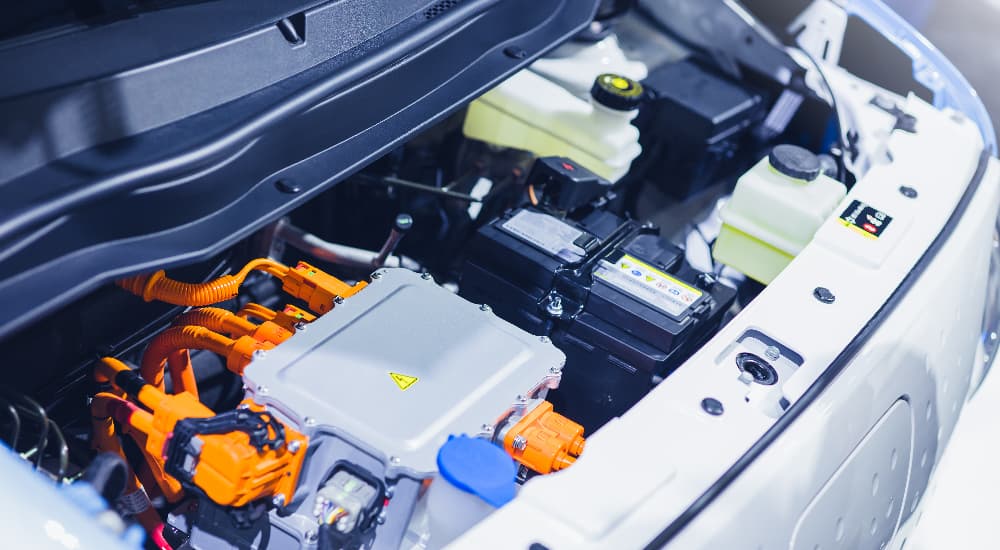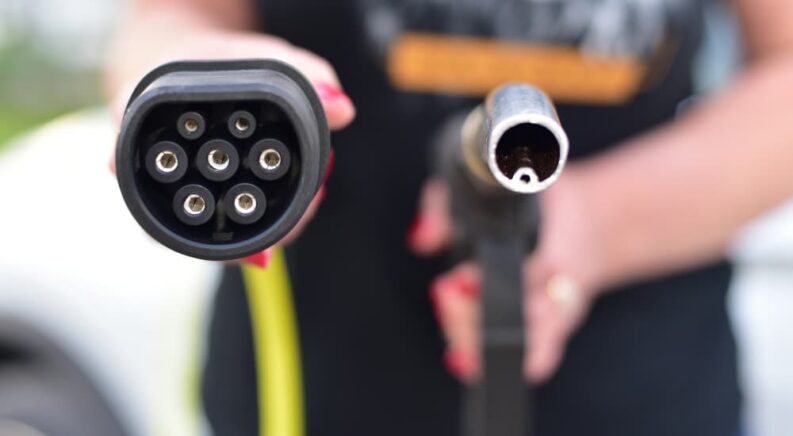Just a short time ago, there was only one way to power a vehicle: an internal combustion engine, or ICE for short. In the last couple of decades, however, more acronyms have come into the mix, including BEV, PHEV, EV, and so on. This begs the question, what’s the difference between them? When it comes to the most frequently asked questions on the internet, they tend to be centered mostly around BEVs (battery electric vehicles), and ICE vehicles. What makes them different, how do they work, and what configuration works best for different types of drives?
What Is a BEV and How Does It Work?
If you’ve read the first paragraph, you already know that a BEV is a battery-electric vehicle, which means that it runs on battery power rather than a traditional gas engine. These vehicles contain a large battery to operate the vehicle and nothing else, requiring it to be charged up to even begin its journey. A BEV includes some important components, such as a battery (obviously), a way to charge the battery, a DC/DC converter to power vehicle accessories, an electric motor to move its wheels, and a thermal system to regulate temperature. Unlike an ICE, a BEV only runs off of electricity, allowing it to be ultra-efficient and great for our environment with zero harmful tailpipe emissions.
A BEV’s battery is made up of a series of cells, so really, we should refer to a BEV’s battery as a “battery pack,” to be more precise. With onboard charging available, AC power is converted into DC power, which charges the primary battery, whose power is then used to turn the vehicle’s wheels. BEVs are simply designed in terms of where everything resides in the vehicle. Most battery packs reside below the floor to optimize weight distribution, while the charging port is typically on the side. The motor is directly attached to the front or rear axle. In some cases, multiple motors drive all four wheels for improved power and traction. There is also no transmission because it’s not needed with an electric motor.

What Is an ICE and How Does It Work?
Internal combustion engines are what most drivers are familiar with, especially if you’ve been driving for a while. An engine contains several cylinders, where a piston moves up and down to bring air and fuel inside this special chamber. The intake valves then close to contain the mixture, while the piston rises to compress the mixture. Spark plugs ignite the spark, pushing the piston back down the cylinder. The piston is connected to the crankshaft, transmission, and eventually the drive wheels, propelling the vehicle to life. The exhaust valve then opens, and the piston pushes the burnt gases out through the exhaust pipe, completing the four-stroke cycle of intake, compression, combustion, and exhaust.
Compared to an electric motor, an internal combustion engine has many more parts inside, including everything from pistons and spark plugs to fuel injectors, valves, and much more. ICE vehicles require more maintenance than BEVs, simply because of all the parts under the hood. Unlike BEVs, this includes the transmission, which is required to transfer power from the engine to the wheels through a wide range of speeds.
What Are the Advantages of a BEV Over an ICE?
Battery electric vehicles emit no harmful greenhouse gasses, which makes them better for the environment than internal combustion vehicles. Because of this, there are numerous tax credits and incentives for driving these vehicles, saving you money. Also saving you money is the fact that BEVs don’t require gasoline, so you can skip the lines at the gas station as well as the rising costs of fueling up your vehicle. They’re also easier to maintain since they have fewer moving parts, compared to gas-powered cars.
What Are the Advantages of an ICE Over a BEV?
ICE vehicles have been around forever, it seems, so they are quite familiar, and we have strong trust in them. Drivers are often concerned about running out of battery power in an EV, but there tends to be a gas station on every corner, so running out of gas is less of a worry. ICE vehicles also tend to showcase more power, as well as better range, especially when it comes to highway driving.
What Are the Disadvantages of BEVs?
BEVs aren’t perfect, although nothing is. These types of vehicles tend to be more expensive than their gas-powered counterparts because of the technology it takes to manufacture them, particularly the batteries. Plenty of raw materials go into EVs, including lithium, cobalt, and other high-priced components included in the battery. Another limitation is the fact that BEVs operate solely on a battery, and once that battery runs out of power, your travels come to an abrupt halt. Some drivers are quite concerned about running out of power on the road. However, there are plenty of charging stations popping up all over the country, as well as home charging solutions available to add some peace of mind to the journey.

What Are the Disadvantages of ICE Vehicles?
Although the internal combustion engine has been around for a very long time, it doesn’t mean that it’s perfect. ICE vehicles emit harmful pollutants into the air, which is cause for concern with the state of our environment at present. Plus, with all of the moving parts found under the hood, maintenance is a given, so drivers can expect more frequent visits to the mechanic and more money put toward maintenance. Speaking of costs, gas isn’t cheap, and its price is highly volatile, so this needs to be taken into consideration when budgeting for an ICE vehicle.
What About the Noise?
Depending on the vehicle you choose, you can either enjoy the roar of a powerful internal combustion engine jumping to life as the light turns green, or the gentle hum of a battery as you make your way through dense highway traffic. Internal combustion engines tend to be louder than battery electric vehicles. However, both types of vehicles can be armed with noise-canceling features, depending on the make and model. This drastically cuts down on road noise, especially at high speeds, for both BEVs and ICE vehicles. The quietness of BEVs can even become a safety concern at times since pedestrians can’t hear them moving. Some BEVs now have backup alarms, similar to large trucks, to alert people in the area when they are backing up.
The Difference Between a BEV and an ICE
Although these two configurations essentially complete the same task, they go about this in completely different ways. BEVs rely strictly on electric battery power to move forward, while ICE vehicles utilize a series of complicated processes to power a vehicle to its destination. BEVs are much better for our environment with fewer emissions, but they are often much pricier than gas-powered options, which have harmful effects on our planet. In the end, drivers need to weigh the pros and cons of each very heavily to ensure that they’re making the right choice. No matter what, both BEVs and ICE vehicles move travelers everywhere they need to go with utter confidence.

